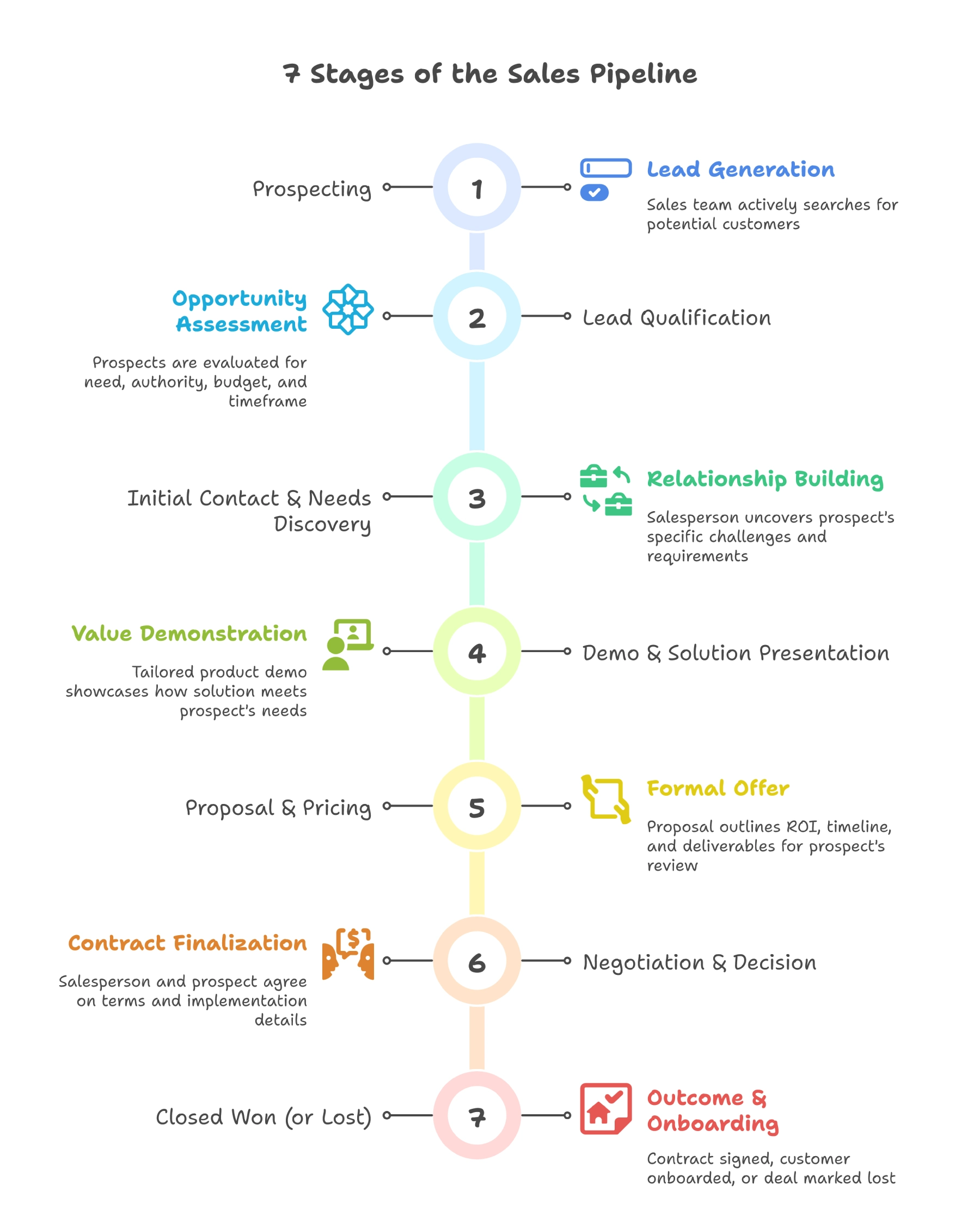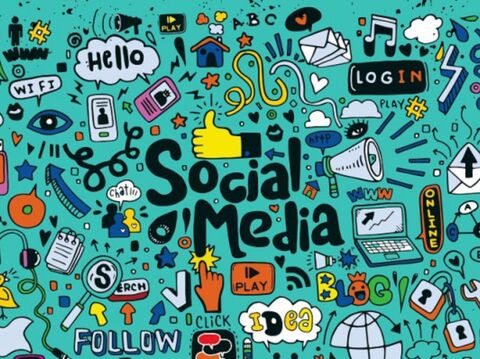Sales Pipeline Stages: How High-Growth Companies are Building Revenue Machines in 2025

Your current sales pipeline is broken. You know it, your team knows it, and frankly, your revenue numbers prove it.
Research shows that the average sales win rate across industries hovers between 2%-5%, with over 80% of the pipeline lost to poor qualification and unclear value communication.
Whether you're selling enterprise software, consumer products, or D2C subscriptions, the fundamental problem remains the same. Most companies treat their sales pipeline stages like a filing system rather than a conversion engine.
In 2025, 80% of sales interactions will occur on digital channels, yet most companies are still using pipeline frameworks designed for face-to-face selling. The result is that deals get stuck somewhere between "qualified lead" and "closed-won," turning what should be your revenue engine into a leaky funnel.
Companies crushing their targets have redefined their sales pipeline stages around measurable outcomes. This isn't about adding more stages or fancy CRM features - it's about building a pipeline that actually converts. Let’s figure modern sales process stages.
What a high-performing pipeline looks like in 2025
Think your sales pipeline is just a fancy way to track where deals sit in your CRM?
A sales pipeline is a structured framework that maps every step a prospect takes from initial contact to becoming a paying customer. The clearly defined stages help sales teams predict revenue and identify bottlenecks.
But here's where most companies get it wrong.
Traditional pipelines are glorified wish lists. "Lead qualified", "proposal sent", "negotiation" - these vague labels tell you nothing about whether a deal will actually close.
High-performing sales teams have completely reimagined their sales pipeline stages around three core principles that separate revenue winners from the rest.
- First principle: Every stage has measurable entry and exit criteria. If a prospect hasn't responded to three follow-ups within your defined timeframe, they're automatically moved to a nurture sequence.
- Second principle: The best sales processes are about moving the right deals forward at the right speed. Companies using advanced management report 40% shorter sales cycle stages because they've eliminated deals that were never going to close anyway.
- Third principle: Your sales stages align with how customers actually buy, not how you prefer to sell. Whether you're running B2B sales process workflows or D2C funnels, your pipeline meaning business comes down to one thing: does each stage represent a genuine progression in your customer's buying journey?
Every stage has an owner, every transition has a trigger, and every stalled deal has a clear next action.
It's about building a pipeline in your modern CRM systems that actually predicts and produces revenue growth at scale.
7 stages of the sales pipeline with entry/exit rules, owners, SLAs, and benchmarks
Most sales teams organise their sales pipeline stages into seven core stages that flow from least likely to highly likely to convert customers.
But here's what makes the difference between companies that hit their targets and those that don't: a crystal-clear understanding of each stage.

Stage 1: Prospecting
This is where your sales pipeline begins. Prospecting involves salespeople actively searching for potential customers through cold outreach, networking, or online research.
You're identifying people who might buy from you, but haven't engaged yet. Automated lead generation tools now help with prospecting also.
- Entry criteria: Contact information collected with lead source tagged
- Exit criteria: First response received or marked unresponsive after outreach sequence
- Owner: SDR or Marketing team
- SLA: First contact within 24 hours for outbound, 15 minutes for inbound
- KPIs: Response rates, cost per lead, lead volume by source
- Benchmark: Top-performing teams achieve 10-20% response rates on cold outreach
Stage 2: Lead qualification
Not everyone who responds is worth your time. Lead qualification involves assessing whether prospects have a genuine need, authority, budget, and decision timeframe. This stage separates genuine opportunities from time-wasters.
- Entry criteria: Prospect responds and agrees to qualifying conversation
- Exit criteria: BANT criteria confirmed or prospect disqualified
- Owner: SDR or inside sales representative
- SLA: Qualification completed within 48 hours of response
- KPIs: Qualification rate, time to qualify, MQL to SQL conversion
- Benchmark: Industry average MQL-to-SQL conversion sits at 12-21%
Stage 3: Initial contact and needs discovery
This is where relationship building starts. You're moving beyond qualification to understand specific challenges and how your solution fits.
The conversation shifts from "can they buy?" to "what do they need?"
- Entry criteria: Qualified prospect with confirmed pain point and budget authority
- Exit criteria: Comprehensive needs analysis completed with documented requirements
- Owner: Account Executive
- SLA: Discovery call scheduled within 72 hours of qualification
- KPIs: Discovery-to-demo conversion rate, average discovery call length
- Benchmark: 30-50% of properly qualified prospects should advance past discovery
Read our guide to learn more about customer lifecycle management
Stage 4: Demo and solution presentation
Now you're showing how your product solves their specific problems. This isn't a generic product demo - it's a tailored presentation that maps your capabilities to their documented needs.
- Entry criteria: Needs assessment complete with stakeholder requirements documented
- Exit criteria: Solution demonstration delivered with clear next steps defined
- Owner: Account Executive with technical support as needed
- SLA: Demo scheduled within one week of needs discovery
- KPIs: Demo attendance rates, demo-to-proposal conversion
- Benchmark: Average opportunity-to-win conversion rate sits at 15-20% across sales teams
Stage 5: Proposal and pricing
Here's where you formalise everything discussed into a concrete business case.
Your proposal should clearly articulate ROI, implementation timeline, and specific deliverables that address their documented needs.
- Entry criteria: Demo completed with positive feedback and budget confirmed
- Exit criteria: Formal proposal submitted with decision timeline established
- Owner: Account Executive
- SLA: Proposal delivered within 5-7 business days of demo
- KPIs: Proposal acceptance rate, time from demo to proposal sent
- Benchmark: Proposal-to-win rates typically range 30-45% for most organisations
Stage 6: Negotiation and decision
The final hurdle. You're working through contract terms, pricing adjustments, and implementation details.
This stage requires patience and flexibility while maintaining profitable deal terms.
- Entry criteria: Proposal reviewed with specific feedback or objections raised
- Exit criteria: Final terms agreed or deal marked lost with documented reason
- Owner: Account Executive with manager support for large deals
- SLA: Negotiation cycle should not exceed 30% of total sales cycle length
- KPIs: Win rate, average discount percentage, negotiation duration
- Benchmark: Negotiation-to-closed-won rates typically fall between 20-30%
Stage 7: Closed won (or lost)
This stage is when the contract is signed and the salesperson's job transitions from selling to ensuring customer success.
But your pipeline management doesn't end here - the handoff quality determines future expansion opportunities.
- Entry criteria: Contract signed and payment terms confirmed
- Exit criteria: Customer successfully onboarded or expansion opportunity identified
- Owner: Customer Success with sales support for upsell opportunities
- SLA: Onboarding initiated within 48 hours of contract signature
- KPIs: Onboarding success rate, time to first value, expansion revenue
- Benchmark: Best-in-class companies generate 30-40% revenue growth from existing customers
Each stage requires specific actions and measurable outcomes. The companies that consistently hit their targets optimise the transition between each sales stage. When you can predict with accuracy how many prospects will advance from stage 3 to stage 4, sales forecasting transforms from guesswork into science.
Check our guide to find the best sales analytics apps to track your prospects better
Your Disposition Index: make stage decisions measurable
Ever wonder why your sales forecasting feels like throwing darts blindfolded? The answer lies in a metric most teams completely ignore: Disposition Index.
Your Disposition Index measures the percentage of records moved to the correct next stage, with complete reason codes, within your defined SLA timeframes.
The formula is simple:
DI = (On-time, correctly coded dispositions ÷ total dispositions) × 100.
It matters because Disposition Index directly correlates with cycle time and win rates by eliminating "stuck" records and ambiguous outcomes that destroy forecast accuracy.
Think about your current pipeline management.
- How many deals sit in "negotiation" for months with no clear next action?
- How many prospects marked as "qualified" haven't actually met your qualification criteria?
These phantom opportunities kill forecasting accuracy.
Companies tracking Disposition Index report more accurate revenue forecasting and shorter sales cycle stages. When every stage movement requires specific disposition codes and timeline compliance, your sales pipeline management transforms into a predictive revenue cycle.
How to push each stage to maximum efficiency
What's the difference between sales teams that consistently hit 120% of quota and those struggling to reach 80%? It's not talent or territory - it's systematic stage optimisation.
Most sales pipeline management measure calls made, not conversations that advance deals. They track emails sent, not responses that reveal buying intent.
Stage 1-2 optimisation: Speed kills hesitation. Research shows prospects are 9x more likely[1] to convert when contacted within the first five minutes versus the first day.
Marketing automation workflows can help here. Set automated alerts for inbound leads and create standard qualification scripts that move fast without feeling rushed.
Stage 3-4 optimisation: Questions reveal intent. The best discovery calls aren't presentations - they're structured interrogations.
Create question frameworks that uncover budget, timeline, decision process, and consequences of inaction. Document everything before moving prospects forward.
Stage 5-7 optimisation: Remove friction, not price. Most negotiations fail because contracts contain surprises, not because pricing is wrong. Standardise proposal templates, clarify implementation timelines upfront, and identify decision-makers early - all using marketing automation tools.
Pipeline velocity increases when each stage has defined success metrics and automated quality gates that prevent unqualified advancement.
Your sales pipeline transformation starts today
Your sales pipeline meaning extends far beyond tracking. It's the difference between hoping for revenue and engineering it.
The companies crushing their targets aren't just optimising their B2B sales process, they're getting every rep to treat pipeline discipline like their personal scoreboard.
Think about it. How many of your current deals can you confidently predict will close this quarter? If you're guessing, your sales cycle stages aren't working. If you know within 10% accuracy, you've built something that actually converts prospects into revenue.
The real challenge is in executing these sales cycles consistently. That's where intelligent automation changes everything. Systems like OttoPilot handle the repetitive pipeline management work (lead scoring, follow-up scheduling, stage transitions) so your reps focus purely on relationship building and deal closure.
GrowthJockey's approach as a venture builder towards sales transformation goes beyond theory. We've helped companies build revenue engines that consistently deliver 3x conversion improvements by combining strategic pipeline design with intelligent automation.
Your pipeline should run like clockwork, not guesswork.
FAQs on sales pipeline stages
How long should each stage in a B2B sales cycle typically last?
Stage duration varies by deal size and complexity, but successful B2B sales processes maintain strict time limits. Prospecting should never exceed 14 days, qualification typically takes 3-7 days, and negotiation shouldn't exceed 30% of your total sales cycle length.
What's the difference between lead stages and sales pipeline stages?
Lead stages focus on marketing qualification before sales engagement, while sales pipeline stages track active selling activities. Lead stages typically include subscriber, marketing qualified lead (MQL), and sales qualified lead (SQL). Understanding what is a sales pipeline versus lead nurturing helps align marketing and sales on handoff criteria, ensuring smooth transitions between teams.
Can you use different sales pipeline stages for different deal types?
Absolutely! Enterprise deals often require additional sales stages like "technical evaluation" or "legal review," while transactional sales might condense stages.
The key is maintaining consistent entry/exit criteria within each pipeline type. Many successful companies use 3-4 different pipeline templates based on deal size, customer type, or product complexity whilst keeping core measurement principles identical across their CRM stages.
How do you know if your current sales stages are actually working?
Measure three key indicators:
- stage conversion rates
- average time per stage
- forecast accuracy
If less than 20% of prospects advance from initial contact to proposal, or if deals consistently stall in specific sales cycle stages for weeks, your current pipeline needs restructuring. Healthy B2B sales processes show predictable conversion patterns and rarely have deals sitting in the same stage beyond defined time limits.








